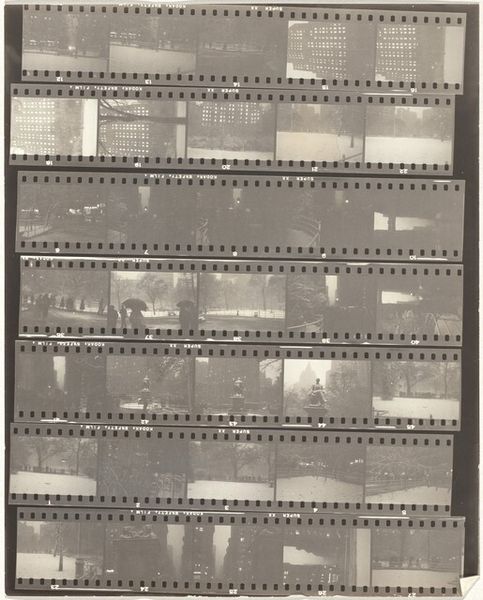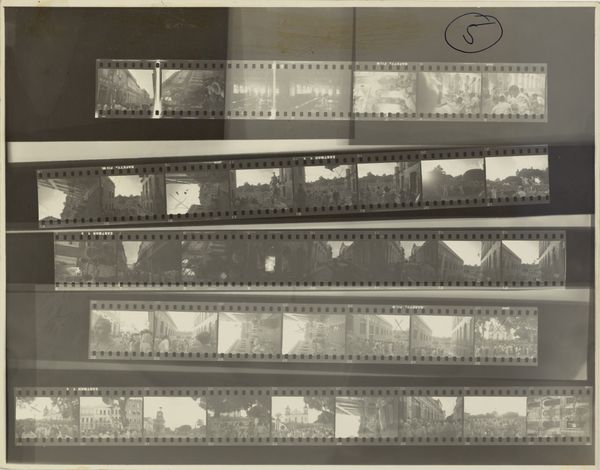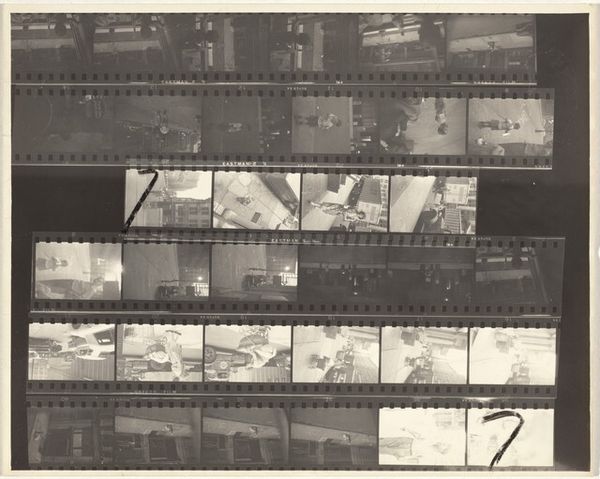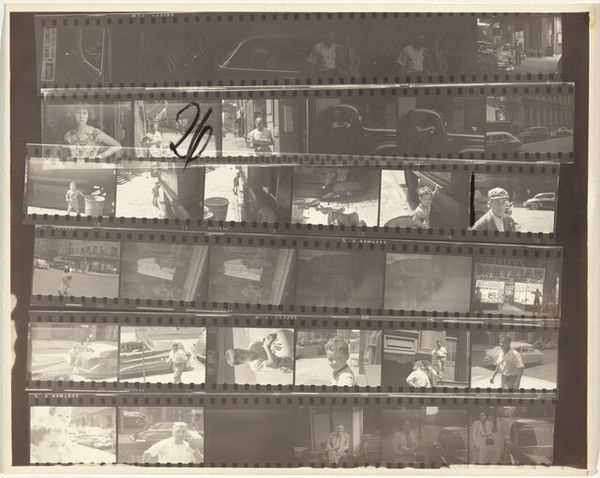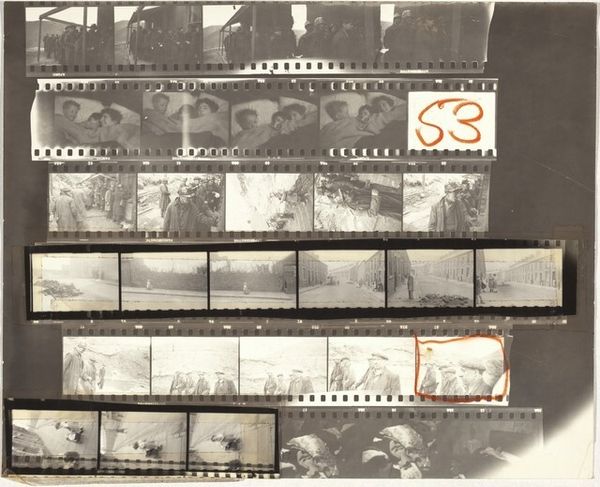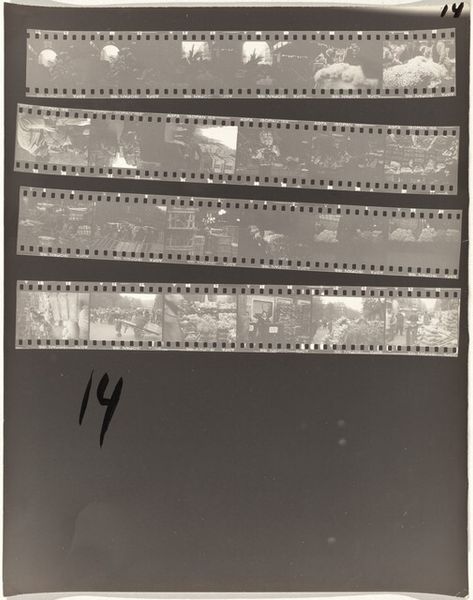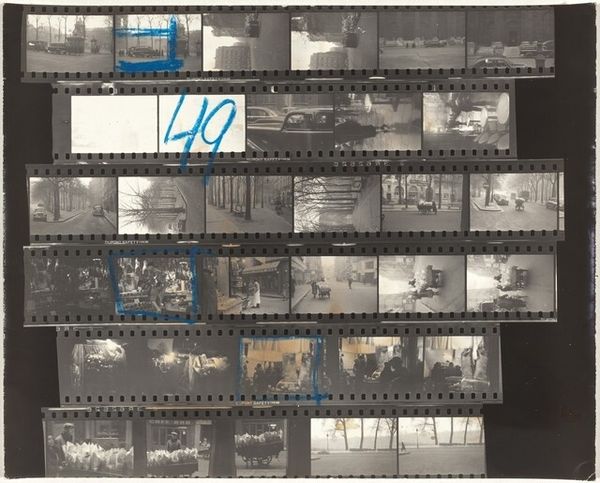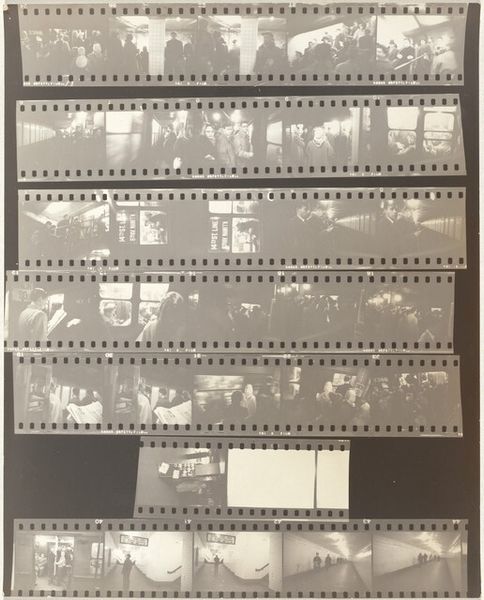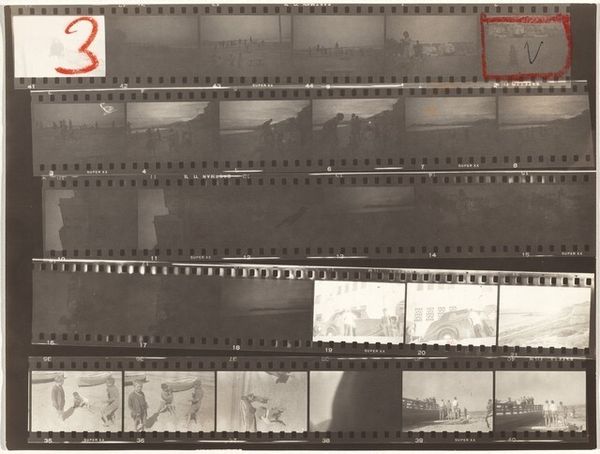
print, photography, gelatin-silver-print
#
print photography
# print
#
landscape
#
street-photography
#
photography
#
historical photography
#
gelatin-silver-print
#
modernism
Dimensions: overall: 20.2 x 25.2 cm (7 15/16 x 9 15/16 in.)
Copyright: National Gallery of Art: CC0 1.0
Curator: Immediately, the starkness strikes me—it's almost raw, the way the light flickers between those fragmented frames. Editor: Today, we are exploring "Paris 22B", a gelatin-silver print by Robert Frank, created between 1951 and 1952. It’s presented as a contact sheet. Curator: A contact sheet! Right. It gives us this kind of intimate, behind-the-scenes feel. It’s not just one image, it's a whole sequence—the artist sifting through his impressions of Paris. What a vulnerable position. Editor: Precisely. Notice how the composition, or rather the *compositions*, are laid out. Each frame offers its own microcosm: the formal arrangement of figures, their poses, the balance of dark and light areas. It almost reads like a series of carefully structured semiotic signs. Curator: Semiotic signs...well, to me, it feels less about deliberate structure and more like capturing the chaotic energy of life, of a specific place, in its purest form. Take the children bundled in the carriage; it’s there then gone—just this little blip of everyday wonder. Do you get the same impression? Editor: The sequential structure emphasizes movement and temporality, nodding towards his later film work. The high contrast in light calls back to surrealist painting, where elements of reality sit on a foundation of abstract philosophy, lending it a timelessness—despite its specificity in capturing daily Parisian life in the 50's. Curator: It makes me consider those slivers of time and perspective that slip by almost unnoticed but resonate deep within, don’t they? A kind of meditation on urban life and our relationship with images. Editor: Certainly. By allowing the viewer to witness Frank’s editing process, he effectively draws us into his creative decision-making—the moments of selecting and rejecting. We are challenged to contemplate the subtle yet profound nature of interpretation in the modern landscape. Curator: Frank pulls aside a curtain, inviting us in. The sheer candidness feels quite disarming. I might take from the work: accept not to edit the many complex, small parts that make a whole life. Editor: Agreed. And by displaying the proofs of what once was, it leaves you thinking of your own interpretation; like archaeology we're reconstructing stories. Thank you for joining us on this journey into "Paris 22B."
Comments
No comments
Be the first to comment and join the conversation on the ultimate creative platform.



